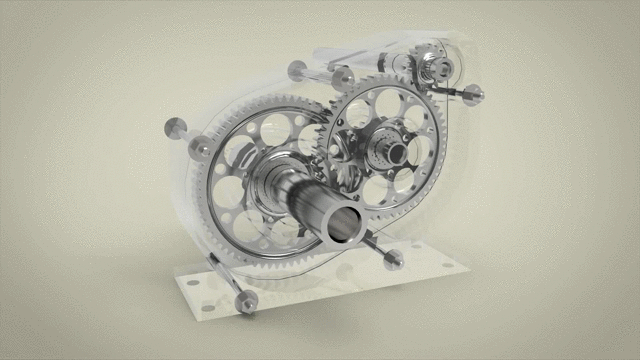By Gilead Biggie (Mechanical Engineering, ’18)
The primary goal of my design this year is to improve the acceleration from last year’s Baja Car. In order to achieve this goal, I selected a CVT (Continuously Variable Transmission) produced by Gaged for the upcoming season. For the past few seasons, the team has a run a CVT produced by CVTech with an overall ratio of 3.5:1 to 0.45:1. The Gaged CVT selected for this season has an overall ratio of 3.9:1 to 0.9:1. In my research, I found that having a higher low end on the CVT ratio is a better fit for a Baja car due to the limitations of the engine. The Briggs and Stratton Engine we are required to use only produces 10 HP which isn’t enough power to fully utilize a 0.45:1 minimum ratio.
Another crucial factor in my decision to run a Gaged CVT was the ability to tune the CVT on the car, a feature that will save crucial time in the tuning process. The ability to tune while on the car will be useful in competition as well, should fine tuning need to occur since large tuning adjustments are not allowed. In addition, to have tuning options on the car the Gaged CVT also has 14 different adjustments to tune the CVT. These added tuning options will allow the team to fully understand and tune the CVT. With these ample tuning options also comes unmatched support from Gaged. This support was another important factor in the decision to run Gaged.
This decision significantly reduces the overall weight of the drivetrain system and car. The Gaged CVT itself weighs about 14 pounds. significantly less than the 22 pound CVTech CVT. In addition, the increased high-end ratio of 3.9 allows for a significantly smaller gearbox ratio, meaning a lighter gearbox. To further reduce the weight of the gearbox, I also reduced the thickness of the gears. This was possible due to lower forces on the gears from the lower gear ratio.
Currently, I am working on designing the gear case to closely wrap around the gear assembly, maximizing weight savings. Once the gear case is complete, the design process will shift towards engine and gear case mounting. This year, we will be implementing a mechanism to tension the CVT belt in order to prevent overheating due to belt slippage. Overheating of the CVT will also be combated in this year’s design through the inclusion of a fan mounted to the CVT primary and an air duct, in collaboration with the exterior design project team.
These improvements to the drivetrain design should allow our car to perform better in the acceleration, hill climb, suspension and traction, and maneuverability events at competition. These improvements will also be seen on endurance day throughout the 4-hour endurance race.

